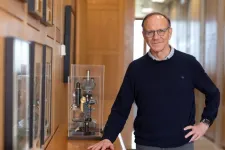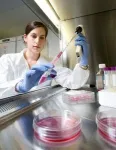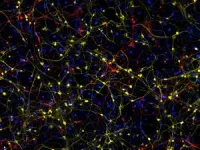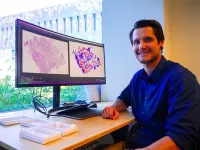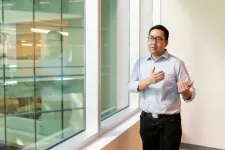(Press-News.org) LA JOLLA (July 31, 2024)—The Salk Institute was awarded $3.6 million by the California Institute for Regenerative Medicine (CIRM), one of the world’s largest institutions dedicated to regenerative medicine. Salk Professor Rusty Gage will lead the new CIRM-funded Shared Resources Laboratory focused on stem cell-based models of aging and neurodegeneration.
The award is part of CIRM’s latest round of funding to address challenges in the regenerative medicine field. The state agency dedicated $27 million to help establish six new Shared Resources Laboratories, each designed to foster collaboration among California researchers.
Stem cell-based models of human tissues and organs have become an important tool for studying health and disease. However, the techniques have yet to be standardized across labs and are not widely accessible to all researchers. The CIRM funding will enable Salk experts to share their tools and expertise with labs across the state. The resulting collaborations could help accelerate the discovery of new therapies, biomarkers, and drug candidates for age-related diseases like Alzheimer’s and Parkinson’s.
"Over the past five years, we have banked cells from a unique aging cohort, and with CIRM’s generous support, we will be able to distribute these quality-controlled resources to California’s stem cell and aging research communities,” said Gage, Vi and John Adler Chair for Research on Age-Related Neurodegenerative Disease at Salk. “Our goal is to enable research into a range of age-associated pathologies, including neurodegenerative diseases."
Gage is a pioneer of stem cell-based techniques for modeling the human brain in health and disease. In 2015, Gage’s lab pioneered a method to convert older people’s skin cells into brain cells, all while retaining the cells’ molecular signatures of aging. Previous methods essentially wiped away all evidence of the person’s age, so this new technique finally made it possible to study brain aging using stem cell-based models.
His lab has also advanced the use of brain organoids—three-dimensional collections of cells that mimic features of human brain tissue. While most brain organoids are made solely of neurons, Gage’s state-of-the-art models also include non-neuronal cells like microglia and astrocytes. This enables scientists to study the role of these important cell types in aging, inflammation, and neurodegeneration.
The new Shared Resources Laboratory at Salk will provide greater access to these top-notch resources and help train other scientists and clinicians in the latest stem cell-based techniques. It will also encourage the standardization of cell resources and protocols to foster reproducible research and strengthen future clinical trials.
“By investing in Shared Resources Laboratories, we are not only providing essential infrastructure for stem cell research but also positioning California at the forefront of this transformative research,” says Rosa Canet-Aviles, vice president of Scientific Programs and Education at CIRM. “Through these awards, CIRM will continue to drive progress, now focusing on cutting-edge disease modeling using human stem cells.”
About the California Institute for Regenerative Medicine (CIRM):
At CIRM, we never forget that we were created by the people of California to accelerate stem cell treatments to patients with unmet medical needs, and act with a sense of urgency to succeed in that mission. To meet this challenge, our team of highly trained and experienced professionals actively partners with both academia and industry in a hands-on, entrepreneurial environment to fast-track the development of today’s most promising stem cell technologies. With $5.5 billion in funding and more than 150 active stem cell programs in our portfolio, CIRM is one of the world’s largest institutions dedicated to helping people by bringing the future of cellular medicine closer to reality. For more information, go to www.cirm.ca.gov.
About the Salk Institute for Biological Studies:
Unlocking the secrets of life itself is the driving force behind the Salk Institute. Our team of world-class, award-winning scientists pushes the boundaries of knowledge in areas such as neuroscience, cancer research, aging, immunobiology, plant biology, computational biology, and more. Founded by Jonas Salk, developer of the first safe and effective polio vaccine, the Institute is an independent, nonprofit research organization and architectural landmark: small by choice, intimate by nature, and fearless in the face of any challenge. Learn more at www.salk.edu.
END
Salk awarded $3.6 million by the California Institute for Regenerative Medicine to advance research on brain aging
The funding will help Salk scientists share their stem cell technologies with other institutions across the state
2024-08-01
ELSE PRESS RELEASES FROM THIS DATE:
Generation X and millennials in US have higher risk of developing 17 cancers compared to older generations, new study suggests
2024-08-01
A new large study led by researchers at the American Cancer Society (ACS) suggests incidence rates continued to rise in successively younger generations in 17 of the 34 cancer types, including breast, pancreatic, and gastric cancers. Mortality trends also increased in conjunction with the incidence of liver (female only), uterine corpus, gallbladder, testicular, and colorectal cancers. The report will be published today in the journal The Lancet Public Health.
“These findings add to growing evidence of increased cancer risk in post-Baby Boomer ...
Around 160,000 joint replacement surgeries lost by COVID-19 pandemic, study finds
2024-08-01
Nearly nine months of joint replacement surgery has been lost - around 160,000 fewer operations – since the start of the COVID-19 pandemic, a new study led by the University of Bristol has found. The research suggests returning to pre-pandemic levels will not tackle the backlog, and even with rapid expansion, it will take many years, if not decades, to fix this joint replacement crisis.
The study, published in The Bone & Joint Journal today [1 August], looked in detail at the effect ...
Public health measures that reduce dementia risk could save up to £4bn
2024-07-31
Public health interventions that tackle dementia risk factors could yield as much as £4bn in savings in England by reducing dementia rates and helping people to live longer and healthier, finds a new study led by UCL researchers.
The study, published in The Lancet Healthy Longevity, shows that interventions – such as reformulating food products to reduce sugar and salt intake, introducing low emission zones to improve air quality in cities, and minimum alcohol unit pricing to reduce drinking – could have extensive benefits beyond just the health outcomes they are directly targeting.
Lead author Dr Naaheed Mukadam (UCL Psychiatry) ...
The Lancet: Nearly half of dementia cases could be prevented or delayed by tackling 14 risk factors starting in childhood, including two new risks—high cholesterol and vision loss
2024-07-31
Vision loss and high cholesterol add to 12 previously identified modifiable risk factors for dementia, concludes a new report from the 2024 Lancet Commission.
The potential to prevent and better manage dementia is high if action to tackle these risk factors begins in childhood and continues throughout life, even in individuals with high genetic risk for dementia.
New report outlines 13 recommendations for individuals and governments to help reduce risk, including preventing and treating hearing loss, vision loss, and depression; being cognitively active ...
Precision oncology via artificial intelligence on cancer biopsies
2024-07-31
A new generation of artificial intelligence (AI) tools designed to allow rapid, low-cost detection of clinically actionable genomic alterations directly from tumor biopsy slides has been developed by a team led by engineers and medical researchers at University of California San Diego.
A paper describing the new AI protocol for examining routine biopsies, called DeepHRD, was recently published in the Journal of Clinical Oncology.
Senior author Ludmil Alexandrov, Ph.D., professor of bioengineering and professor of cellular and molecular medicine at UC San Diego, says the new method is designed to save weeks and thousands of dollars from clinical oncology treatment workflows ...
What you don't know about endometrial cancer could kill you
2024-07-31
CLEVELAND, Ohio (July 31, 2024)—Despite the fact that endometrial cancer is the most common cancer of the female reproductive organs, a significant percentage of women do not know that postmenopausal bleeding is a key warning sign of the disease. Worse, even fewer women report having received any type of counseling on the subject from their healthcare professionals. That’s according to a new study published online today in Menopause, the journal of The Menopause Society.
It is estimated that 67,880 new cases of ...
Does it matter that the ovaries are the most rapidly aging organs in the female body?
2024-07-31
CLEVELAND, Ohio (August 1, 2024)—Because of the aging of the ovaries, a woman’s fertility gradually declines, and she eventually enters menopause. The onset of menopause puts women at a significantly higher risk of various diseases such as cardiovascular disease and osteoporosis. A new study suggests that a shorter reproductive lifespan is linked with a higher risk of multimorbidity. Results of the survey are published online today in Menopause, the journal of The Menopause Society.
The effect of reproductive-related factors on women’s health has become a focus of interest and study in recent years. Previous studies have identified the ...
Serotonin uptake regulates ependymoma tumor growth
2024-07-31
(MEMPHIS, Tenn. – July 31, 2024) Do neurons play a role in brain tumor growth and development? Scientists at St. Jude Children’s Research Hospital and Baylor College of Medicine have evidence showing that, for childhood ependymomas, they do. There are no targeted therapies available to treat ependymoma due in large part to a lack of understanding of the tumor microenvironment. By leveraging a recently developed murine model, scientists explored the interaction between ependymoma cells and surrounding neurons. They found that hyperactivation of a specific subset ...
Scientists set sail to study Greenland glaciers from underwater
2024-07-31
The University of Texas at Austin has embarked on a mission to explore the underwater edges of Greenland’s coastal glaciers to learn more about future sea level rise.
The four-week expedition conducted with international partners will investigate processes that control how these giant glaciers melt and what that means for the future of the Greenland ice sheet, which has about 23 feet (7 meters) of potential sea level rise locked away in its ice.
Joining the researchers is a robotic submersible that will gather measurements of the glaciers’ underwater walls and sediment-laden meltwater, a feat that’s never been ...
Smell reports reveal the need to expand urban air quality monitoring, say UBC researchers
2024-07-31
Ever wondered if your neighbourhood odour could be impacting your health? University of British Columbia researchers have uncovered surprising insights into the Vancouver region's “smellscape” using data from the Smell Vancouver app. Analyzing 549 reports from one year of app data, they discovered that “rotten” and “chemical” odours dominated, making up about 65 per cent of submissions. These unpleasant smells were linked to self-reported health issues like headaches and anxiety, leading some residents to change their behaviours, like closing windows even in stifling-hot weather.
“The ...
LAST 30 PRESS RELEASES:
Sleeping in on weekends may help boost teens’ mental health
Study: Teens use cellphones for an hour a day at school
After more than two years of war, Palestinian children are hungry, denied education and “like the living dead”
The untold story of life with Prader-Willi syndrome - according to the siblings who live it
How the parasite that ‘gave up sex’ found more hosts – and why its victory won’t last
When is it time to jump? The boiling frog problem of AI use in physics education
Twitter data reveals partisan divide in understanding why pollen season's getting worse
AI is quick but risky for updating old software
Revolutionizing biosecurity: new multi-omics framework to transform invasive species management
From ancient herb to modern medicine: new review unveils the multi-targeted healing potential of Borago officinalis
Building a global scientific community: Biological Diversity Journal announces dual recruitment of Editorial Board and Youth Editorial Board members
Microbes that break down antibiotics help protect ecosystems under drug pollution
Smart biochar that remembers pollutants offers a new way to clean water and recycle biomass
Rice genes matter more than domestication in shaping plant microbiomes
Ticking time bomb: Some farmers report as many as 70 tick encounters over a 6-month period
Turning garden and crop waste into plastics
Scientists discover ‘platypus galaxies’ in the early universe
Seeing thyroid cancer in a new light: when AI meets label-free imaging in the operating room
Neutrophil-to-lymphocyte ratio may aid risk stratification in depressive disorder
2026 Seismological Society of America Annual Meeting
AI-powered ECG analysis offers promising path for early detection of chronic obstructive pulmonary disease, says Mount Sinai researchers
GIMM uncovers flaws in lab-grown heart cells and paves the way for improved treatments
Cracking the evolutionary code of sleep
Medications could help the aging brain cope with surgery, memory impairment
Back pain linked to worse sleep years later in men over 65, according to study
CDC urges ‘shared decision-making’ on some childhood vaccines; many unclear about what that means
New research finds that an ‘equal treatment’ approach to economic opportunity advertising can backfire
Researchers create shape-shifting, self-navigating microparticles
Science army mobilizes to map US soil microbiome
Researchers develop new tools to turn grain crops into biosensors
[Press-News.org] Salk awarded $3.6 million by the California Institute for Regenerative Medicine to advance research on brain agingThe funding will help Salk scientists share their stem cell technologies with other institutions across the state
